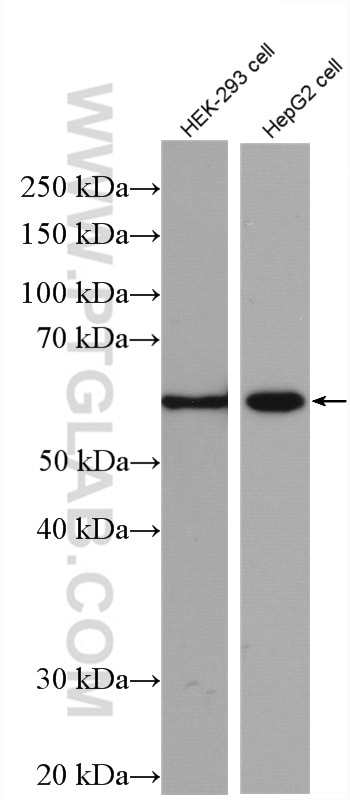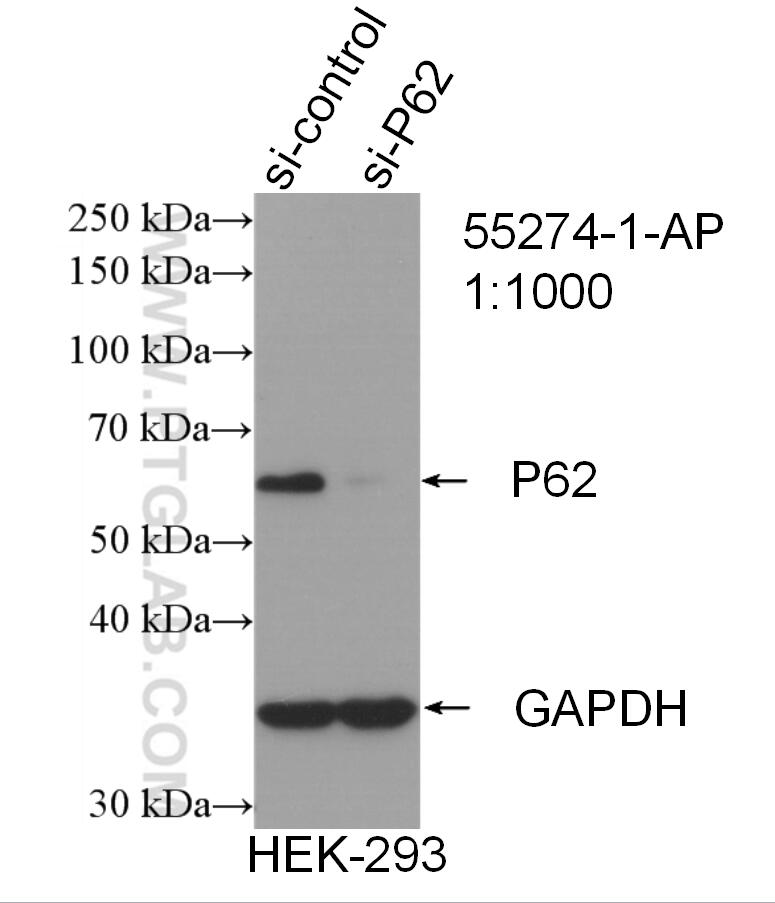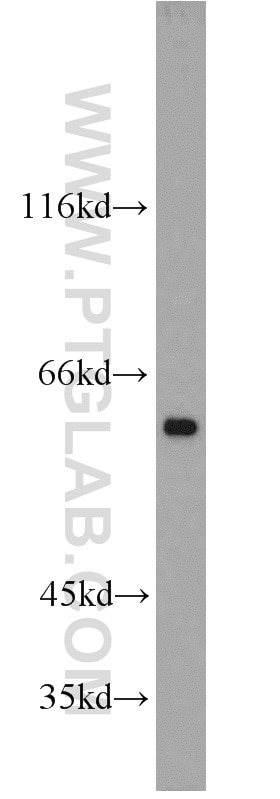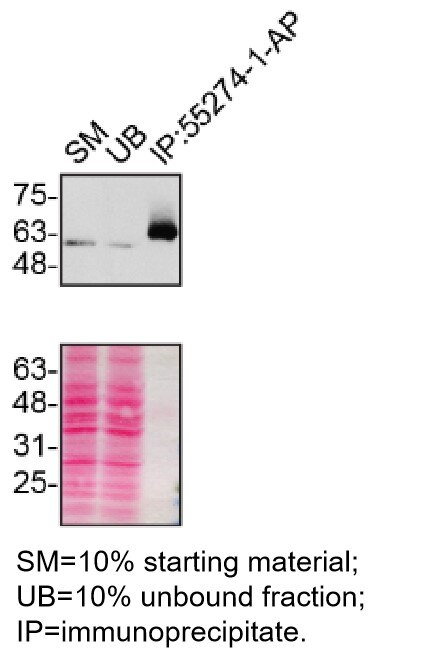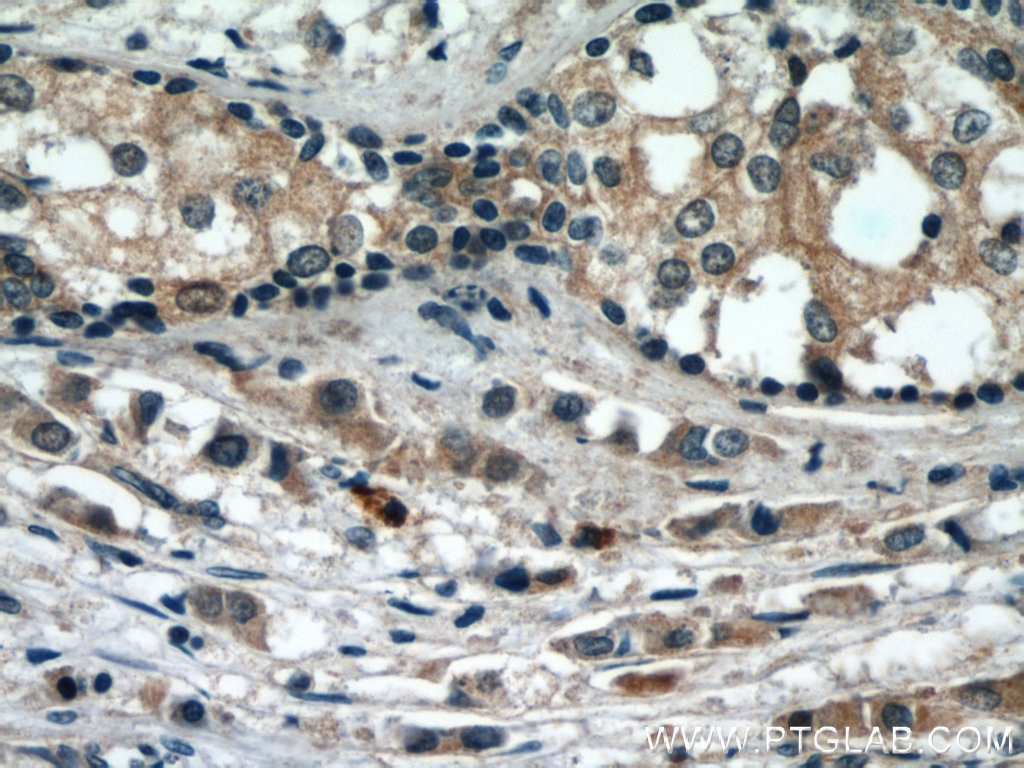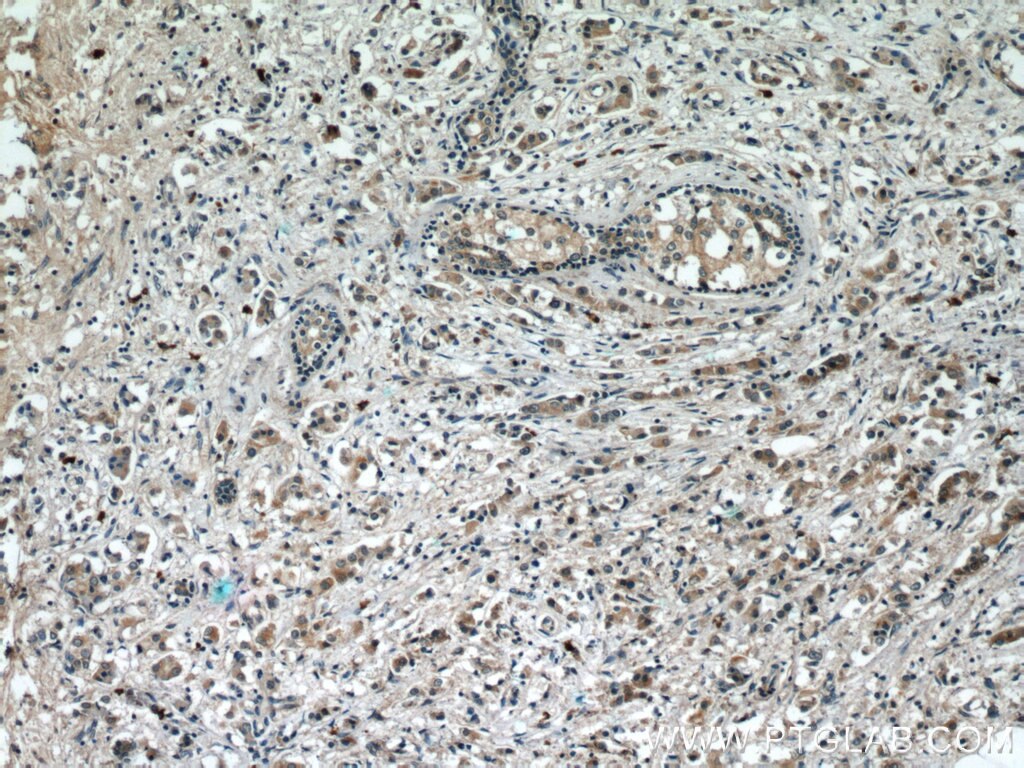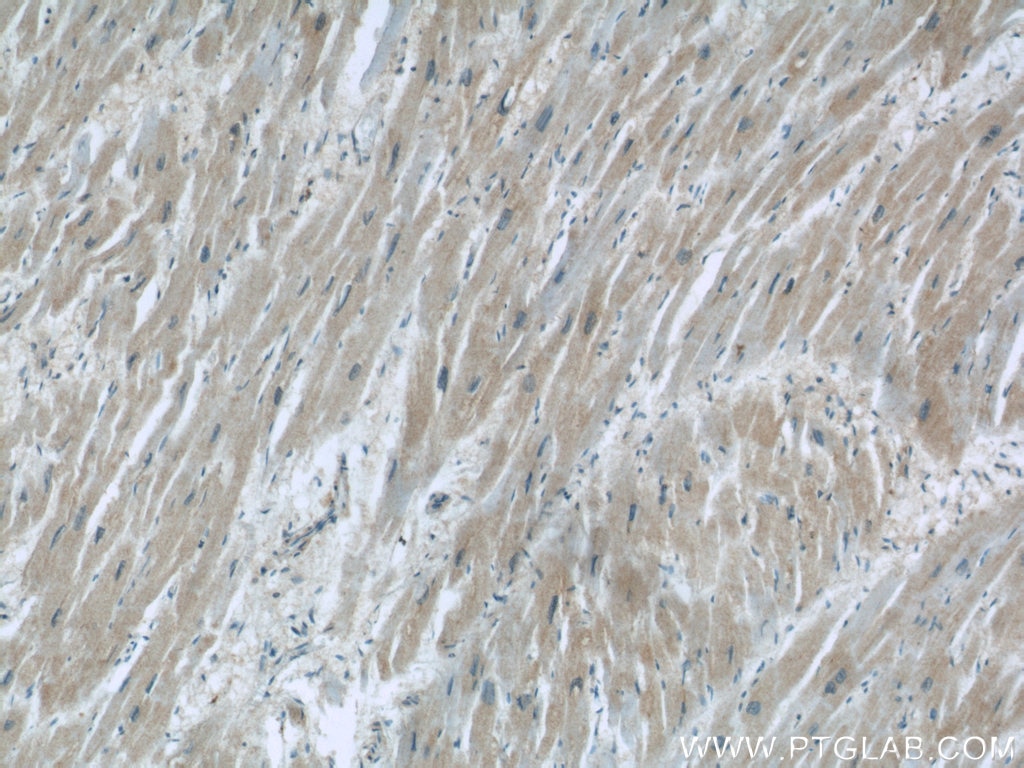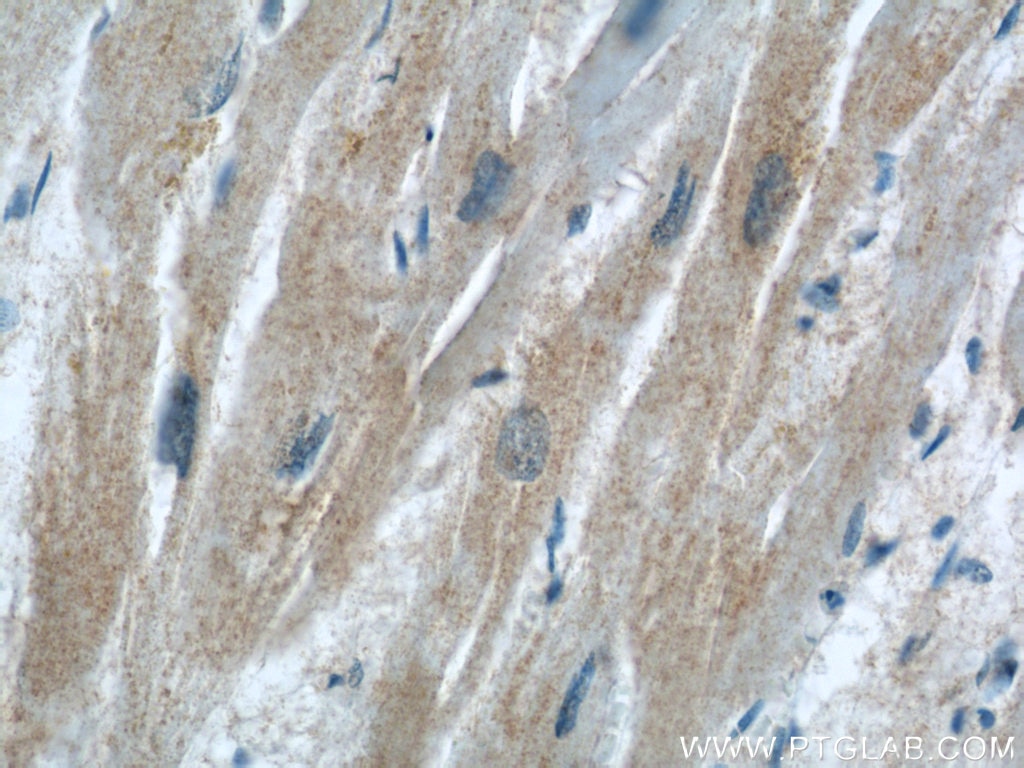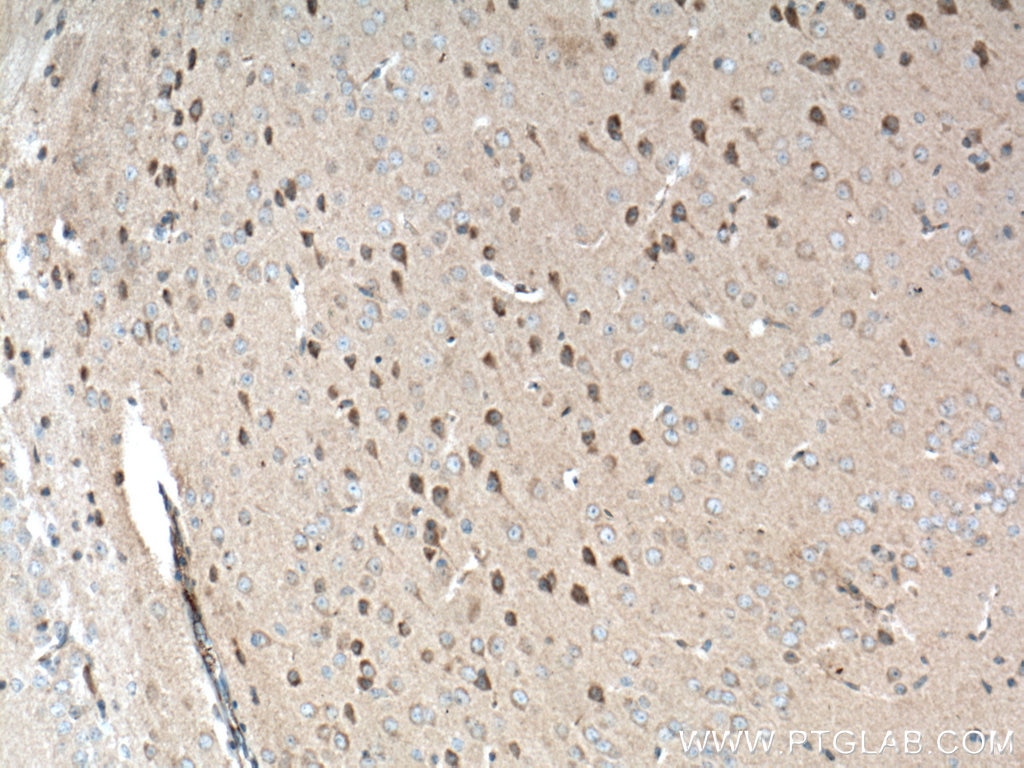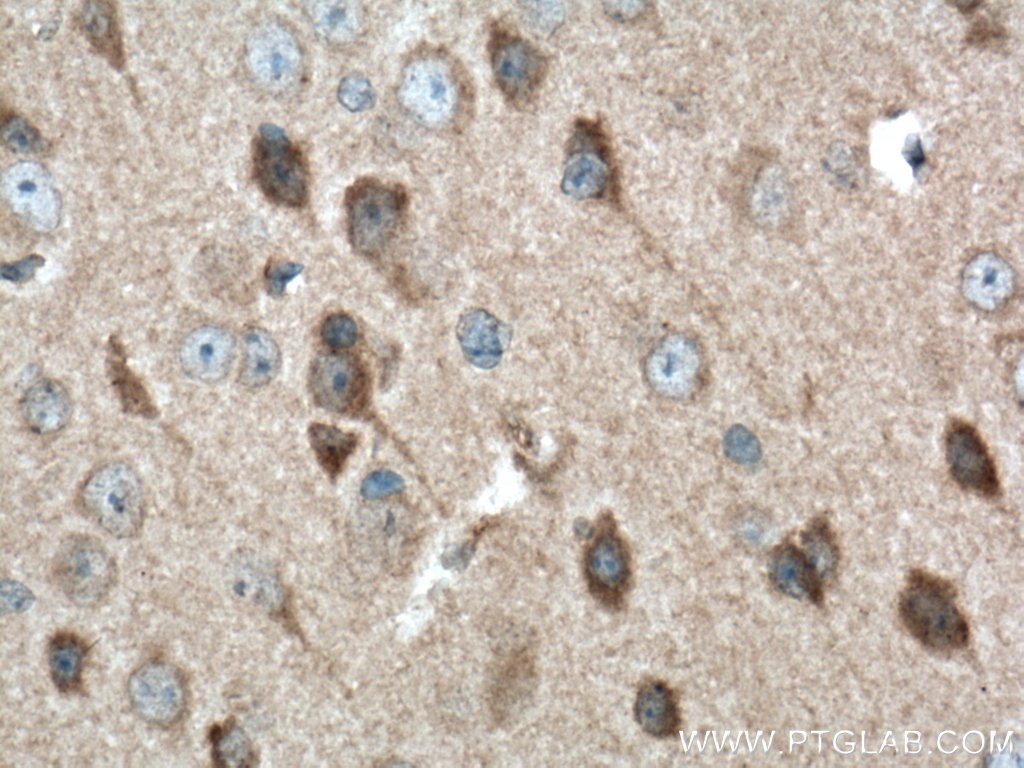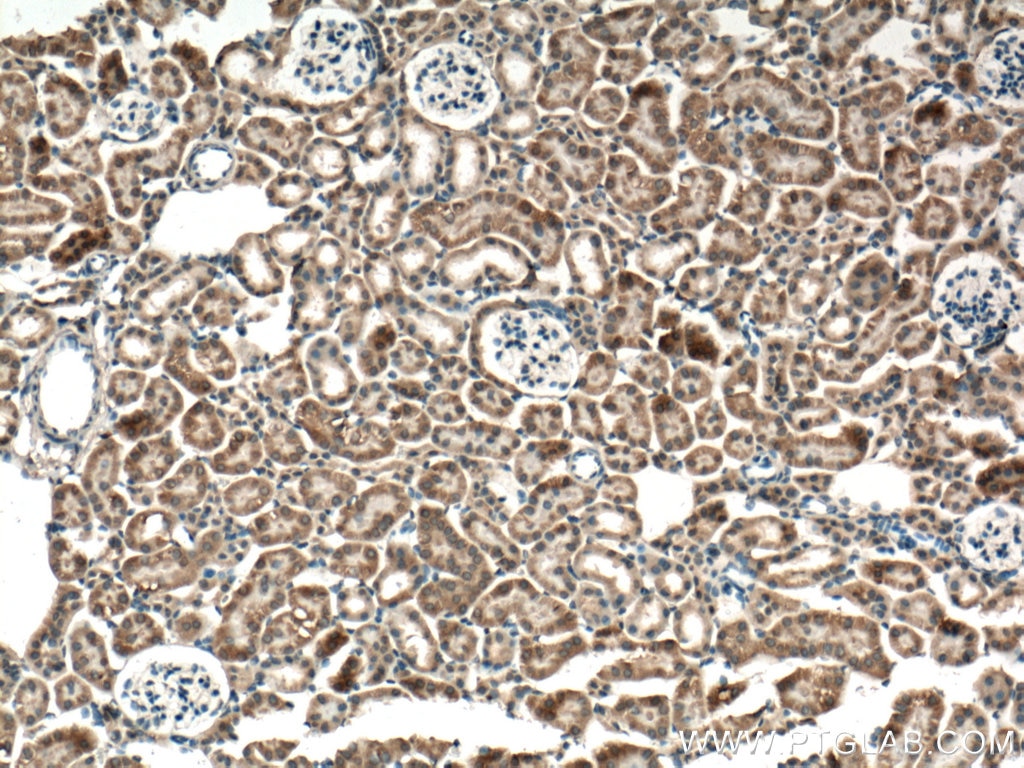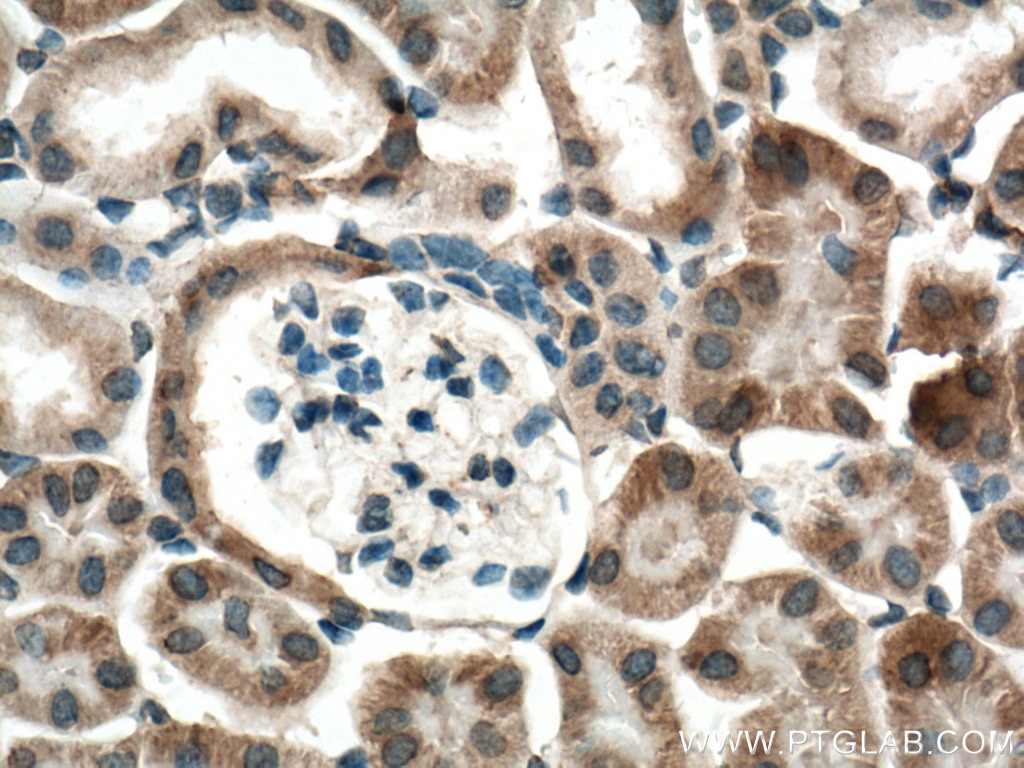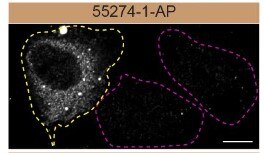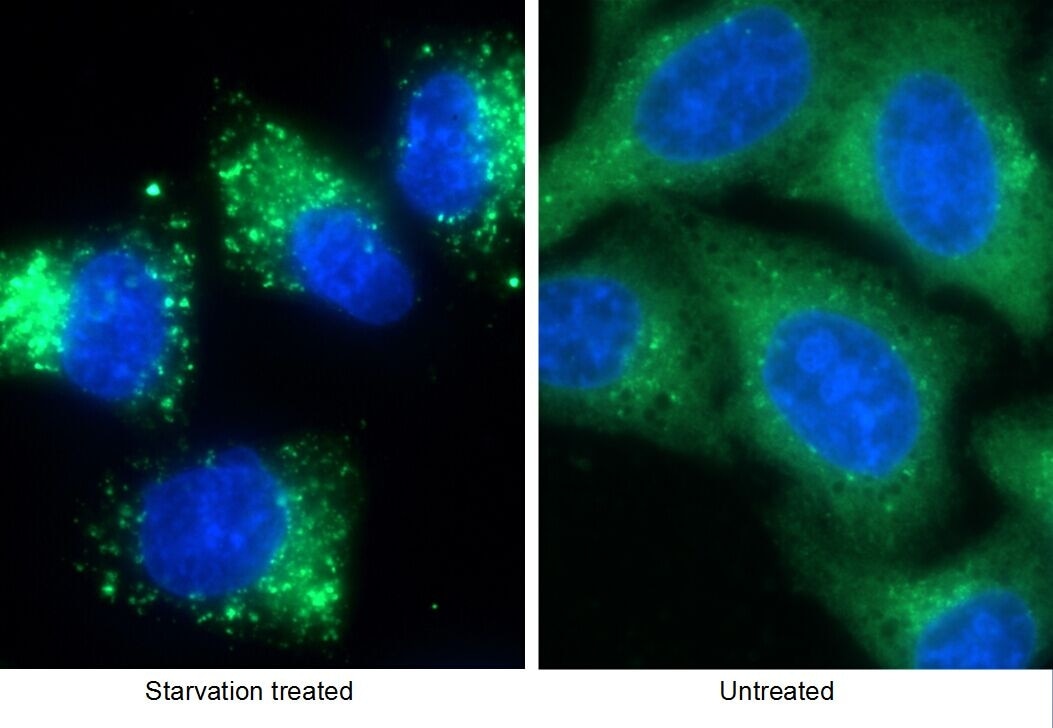- Phare
- Validé par KD/KO
Anticorps Polyclonal de lapin anti-P62/SQSTM1
P62/SQSTM1 Polyclonal Antibody for IF, IHC, IP, WB, ELISA
Hôte / Isotype
Lapin / IgG
Réactivité testée
Humain, rat, souris
Applications
WB, IP, IHC, IF, ELISA
Conjugaison
Non conjugué
N° de cat : 55274-1-AP
Synonymes
Galerie de données de validation
Applications testées
| Résultats positifs en WB | cellules HEK-293, cellules HepG2, cellules MCF-7 |
| Résultats positifs en IP | cellules U2OS, |
| Résultats positifs en IHC | tissu de cancer du sein humain, tissu cardiaque humain, tissu cérébral de souris, tissu rénal de souris il est suggéré de démasquer l'antigène avec un tampon de TE buffer pH 9.0; (*) À défaut, 'le démasquage de l'antigène peut être 'effectué avec un tampon citrate pH 6,0. |
| Résultats positifs en IF | cellules HepG2, cellules U2OS |
Dilution recommandée
| Application | Dilution |
|---|---|
| Western Blot (WB) | WB : 1:500-1:1000 |
| Immunoprécipitation (IP) | IP : 0.5-4.0 ug for 1.0-3.0 mg of total protein lysate |
| Immunohistochimie (IHC) | IHC : 1:20-1:200 |
| Immunofluorescence (IF) | IF : 1:20-1:200 |
| It is recommended that this reagent should be titrated in each testing system to obtain optimal results. | |
| Sample-dependent, check data in validation data gallery | |
Applications publiées
| WB | See 20 publications below |
| IHC | See 3 publications below |
| IF | See 4 publications below |
Informations sur le produit
55274-1-AP cible P62/SQSTM1 dans les applications de WB, IP, IHC, IF, ELISA et montre une réactivité avec des échantillons Humain, rat, souris
| Réactivité | Humain, rat, souris |
| Réactivité citée | rat, Humain, souris |
| Hôte / Isotype | Lapin / IgG |
| Clonalité | Polyclonal |
| Type | Anticorps |
| Immunogène | Peptide |
| Nom complet | sequestosome 1 |
| Masse moléculaire calculée | 48 kDa |
| Poids moléculaire observé | 60 kDa |
| Numéro d’acquisition GenBank | NM_003900 |
| Symbole du gène | SQSTM1 |
| Identification du gène (NCBI) | 8878 |
| Conjugaison | Non conjugué |
| Forme | Liquide |
| Méthode de purification | Purification par affinité contre l'antigène |
| Tampon de stockage | PBS avec azoture de sodium à 0,02 % et glycérol à 50 % pH 7,3 |
| Conditions de stockage | Stocker à -20°C. Stable pendant un an après l'expédition. L'aliquotage n'est pas nécessaire pour le stockage à -20oC Les 20ul contiennent 0,1% de BSA. |
Informations générales
SQSTM1, also named as ORCA, OSIL, p60, EBIAP, A170, PDB3, ZIP3, p62 and p62B, is an adapter protein which binds ubiquitin and may regulate the activation of NFKB1 by TNF-alpha, nerve growth factor (NGF) and interleukin-1. It may play a role in titin/TTN downstream signaling in muscle cells. SQSTM1 may regulate signaling cascades through ubiquitination. It is an adapter that mediates the interaction between TRAF6 and CYLD. SQSTM1 may be involved in cell differentiation, apoptosis, immune response and regulation of K+ channels (PMID: 10356400). This antibody is specific to SQSTM1.
Protocole
| Product Specific Protocols | |
|---|---|
| WB protocol for P62/SQSTM1 antibody 55274-1-AP | Download protocol |
| IHC protocol for P62/SQSTM1 antibody 55274-1-AP | Download protocol |
| IF protocol for P62/SQSTM1 antibody 55274-1-AP | Download protocol |
| Standard Protocols | |
|---|---|
| Click here to view our Standard Protocols |
Publications
| Species | Application | Title |
|---|---|---|
Nat Commun Autophagy-mediated apoptosis eliminates aneuploid cells in a mouse model of chromosome mosaicism. | ||
Cell Death Differ CRSP8 promotes thyroid cancer progression by antagonizing IKKα-induced cell differentiation. | ||
Autophagy An integrative multi-omics approach uncovers the regulatory role of CDK7 and CDK4 in autophagy activation induced by silica nanoparticles. | ||
Front Pharmacol Morroniside Inhibits H2O2-Induced Podocyte Apoptosis by Down-Regulating NOX4 Expression Controlled by Autophagy In Vitro. | ||
Front Pharmacol Resolvin D1 attenuates CCl4 Induced Liver Fibrosis by Inhibiting Autophagy-Mediated HSC activation via AKT/mTOR Pathway | ||
Nutrients Punicalagin Prevents Inflammation in LPS-Induced RAW264.7 Macrophages by Inhibiting FoxO3a/Autophagy Signaling Pathway. |
